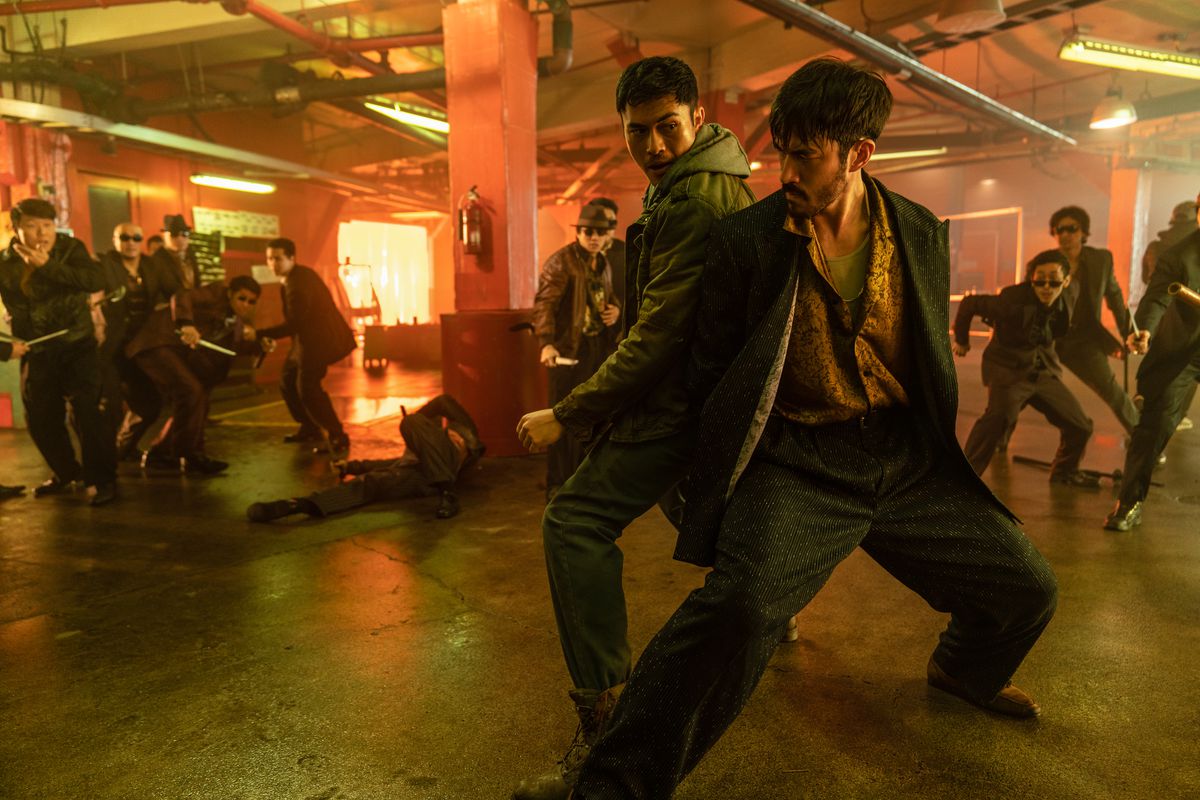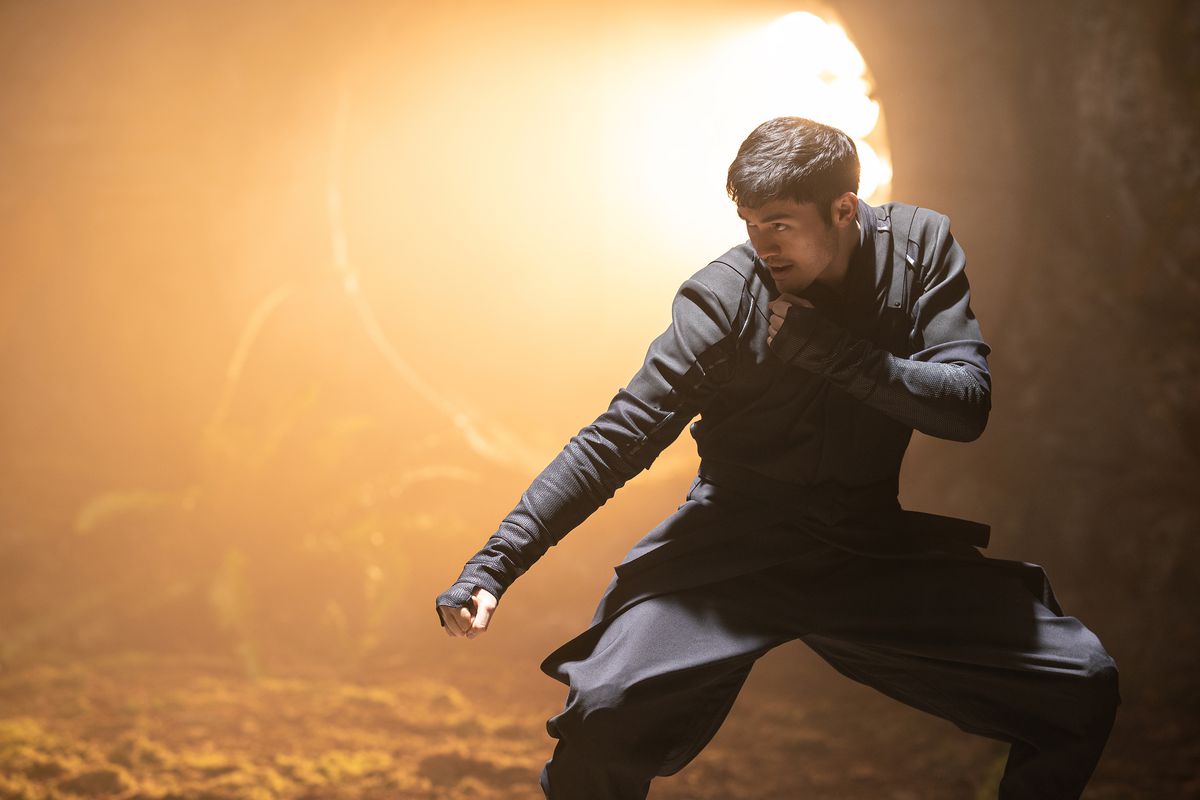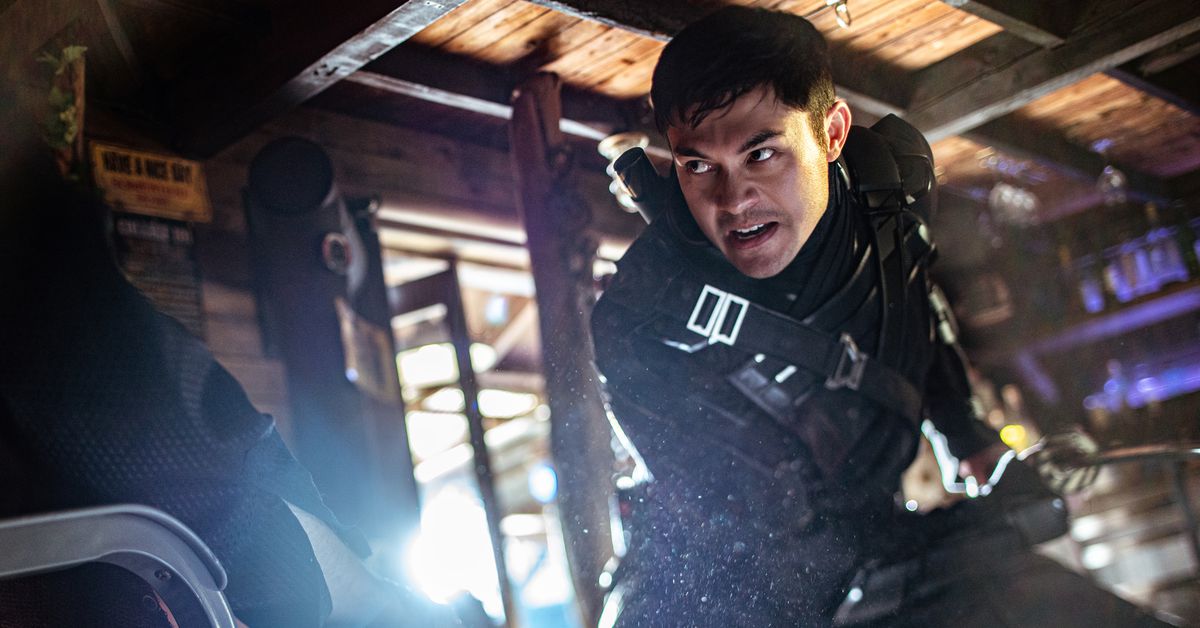Lorenzo di Bonaventura has been around the block(buster). In the 1990s, the producer was an executive at Warner Bros. Pictures, championing films at every budget-level and eventually bringing in the Harry Potter franchise. As an independent producer in the 2000s, he produced everything from the Stephen King adaptation 1408 to Angelina Jolie’s Salt to the micro-budgeted The Devil Inside and Mark Wahlberg’s prestige action drama Deepwater Horizon. But his biggest and most intimidating feat may be as the overseer of two mega-franchises: Transformers and G.I. Joe.
Under the eye of Michael Bay, the Transformers movies became Paramount Pictures’ prized possession, a billion-dollar franchise that’s been going for over a decade and a half. Joe has turned out to be more complicated: 2009’s G.I. Joe: The Rise of Cobra was a popcorn romp that didn’t click with mass audiences, while 2013’s G.I. Joe: Retaliation went a bit grittier with The Rock, though only broke even. Now di Bonaventura is back with another take on G.I. Joe with the martial-arts-heavy Snake Eyes, directed by Robert Schwentke (Insurgent). Snake Eyes is off to a slow start, but it’s unclear how things will pan out in the longterm, with the theatrical model only just climbing back and condensed release windows stymied by streaming deals. Could it still be the start of something fresh for the franchise? There’s reason to think so, as di Bonaventura tells it.
With Snake Eyes out now in theaters and a newly announced Transformers movie, Rise of the Beasts, now in production with director Steven Caple Jr. (Creed II) and In the Heights star Anthony Ramos, Polygon sat down with the producer to talk about the balancing act of making giant movies that still bring the personality with each installment.
How long have you been talking about doing the Snake Eyes movie? I’m sure ideas have changed over the years.
Whenever we brought it up, the thing that kept coming up was the origin story of Snake and Storm because it was so interesting and chock full of emotion. Brotherhood, betrayal, all the things that make really great drama — it has that in its story. It’s a very Cain and Abel thing. We talked about many things, but it always came back to that pretty quickly because it was so rich and so elemental.
What does a G.I. Joe movie need to have to be a G.I. Joe movie? The original Joe movies were very soldier-centric, but you get away from that here.
I don’t think of this as a Joe movie. I really do think of as a Snake movie. The reason we chose Snake Eyes was because we were able to make such a specific, tonal reference, whether it’s a samurai movie or a Kung Fu movie, and so I think of it more in those terms, this particular movie. It is really about a journey into a mystical land. That really appealed to me. Many years ago, I did the movie The Last Samurai when I was at Warner Brothers; the exploration of the Japanese culture, I find kind of fascinating to begin with. It’s such a different culture, to state the obvious. But there’s so much to be found there that makes you reflect on your own culture. So I think that’s the benefit of having been driven there by a Cain and Abel story.

Photo: Ed Araquel/Paramount Pictures
Do you go back to old movies when you start developing new ones?
Every time I make a really hard-hitting action movie, I watch certain movies because the tone of them is what we’re trying to communicate. So when we made the movie Shooter, we all looked at Deer Hunter and, this is funny because not a lot of people knew or liked this movie, but The Package, which is a Gene Hackman movie and Tommy Lee Jones that gets that paranoid thriller feeling incredibly well. So there are certain movies that are reference points. Good movies, at minimum, or great movies, but we’re specifically trying to remind ourselves of what’s possible.
What did you watch for Snake Eyes?
The funny thing about Snake Eyes was both Robert and I have watched a lot of Kung Fu and samurai movies so there it was sort of the collective of having watched those that drove us. Not, not, I don’t know about Robert. For me, it was really the genre.
Along with Joe you’ve overseen the Transformers movies since the 2007 movie. That franchise really took root, became gigantic, then eventually it made sense to scale down the premise in Bumblebee. Did you learn anything from that franchise that you brought to rethinking Joe in Snake Eyes?
I would say that once you’ve done a few big versions of something, you’re sort of trapped in a corner a little bit. You either continue that run, which was the case on Transformers, we went five [movies]. And I think in a way to break the cycle of it, we went specific, not small, because Bumblebee’s not a small movie, but it’s more emotional and we we took a very different tact from a storytelling point of view. So that’s probably true here, too, of Snake Eyes. We were like, “OK, let’s break away from what we’ve been doing.” There’s a freedom in that, and there’s a sort of a rejuvenation of joy about what it is.
Was Bumblebee a bit of a gamble? Did it pay off? It seemed successful, but maybe modestly so.
I rarely criticize the marketing campaigns because it is what it is, but it truly had an abysmal marketing campaign. They were trying to sell it too soft and so it became like we were selling an animated movie or something. But the result of it was that the movie is really loved. It re-engaged the audience in a very different way and was very successful in that. I think from a financial point of view, you’re right, it was a modest success. But for the franchise, it was a big success. It reminded the audience of their sort of elemental connection to these metal beings and why we love them and why we care about their personality. So I think on that level, it was a smashing success. The best measure is we got to go on ahead and make another Transformers movie.

You recently announced Transformers: Rise of the Beasts — how will that continue the thinking from Bumblebee or perhaps rethink the franchise?
I’ll say this: The first Transformers movie and the Bumblebee movie both got into that sense of wonder and that first connection between man and machine. So we’re hoping to replicate, in many ways, what we did in Transformers 1, which was tell a very emotion-driven story with big, wild experience. Bumblebee reminded us of our roots, in a sense.
Snake Eyes and Rise of the Beasts both reframe these big franchises that are predominantly known for white characters and leads with people of color. Are the series gaining new perspective by telling the stories with nonwhite characters?
Diversity is such a minefield of discussion these days, but I totally get what you’re saying. I would say there were very different reasonings behind what happened: Rise of the Beasts is very much a story of identity. Well, they’re both stories of identity, interestingly enough, and I think that’s what was interesting to explore with diverse characters because we’ve kind of explored it with white characters, with Shia [LaBeouf, star of Transformers], in a sense.
What appealed to us in Snake Eyes was, frankly, the kind of culture that a samurai movie has. That felt like such a fresh departure from where we were,. Part of our job is to keep the audience engaged by surprising them. So that was a very conscious identity discussion. We didn’t write the character as Asian or white or anything. We just called him “Snake Eyes” and then when we went to cast.
There’s not a lot of people who have, I’ll say, enough visibility to feel like they can carry a movie. Henry was an unlikely choice, and it was actually the studio who suggested him. Robert and I were like, “We’re not sure, because what do we know him as?” We know him as sort of dashing. More Cary Grant, in a way. So when we first sat down with him, it was his enthusiasm that won us over, and also his willingness to learn. He really wanted to learn to fight. And my experience is when you have an actor that’ll do that, it becomes very compelling for the audience. You really feel like Henry’s fighting because he is. He trained like crazy. He did some of his own stunts.
The thing I never really factored into the choice of Henry was the fact that he is big. Like, he’s a big man, so he brings that presence. I know it’s not fashionable anymore but when I grew up, John Wayne, Clint Eastwood, they were big men. Steven Seagal, Arnold. Action heroes had scale. Henry is big. I was really surprised by that. I don’t know why, but I didn’t realize he was that tall, and he’s built. His size brings a credibility.

Photo: Paramount Pictures
How did you end up hiring Robert to direct your martial arts movie?
Well, two things: One is I really love RED. It’s one of the movies I’m most proud of as a producer. It’s so crazy and wacky and somehow we pulled the tone off.
You did Helen Mirren in Fast and the Furious before Helen Mirren in Fast and the Furious.
I know, I know, they’re ripping us off! It’s almost the exact shot, by the way, from RED, too. But that’s another conversation. God bless her, by the way. She’s fabulous.
Anyhow, I think we put Robert on a list and then I called Robert and I said, “Are you interested?” And he said, “You have no idea. I am such a gigantic samurai fan.” And then he immediately started rattling off all these movies I’d never heard of. He is a hardcore samurai kung fu fan, but specifically samurai, and I thought, “You know what? He’s going to get that right.”
You wound up working with a lot of Eastern crew, including action director Kenji Tanigaki, who choreographed the fights.
Robert and I talked about if we could do a fusion of Eastern action and Western action. Kenji worked on Hong Kong films that we all know and love, if you like those kind of films. We had a second unit director, Jim Madigan, who worked on a bunch of movies with us, and so it was this idea of creating this fusion. The unexpected thing that occurred was when we were shooting in Vancouver, we probably had, between our cast and our crew, probably 20 to 25% Japanese, 75% other. When we went to Japan, that ratio changed and became more like, 75% Japanese to 25% other. It felt like it sort of influenced how the movie feels. And it certainly made our shooting in Japan much much easier because they didn’t view us as the Americans arriving. The experience of shooting there was really great because we were embraced.
Where do you hope the Joe franchise goes from here? Do you hope to follow Snake Eyes and Storm Shadow? Is it possible we’ll see other flavors of Joe movies?
It’s not preordained. I think there’s different ways we can go. One way, for sure, and we’re having discussions about it, is how do you keep sort of the spine of this relationship that we’ve developed? This antagonistic relationship? Is there a way to fuse that into a larger Joe movie so that maybe it’s one storyline? Maybe it’s the main storyline. So it’s not clear yet what we’re going to decide on doing. The hard part right now, honestly, is we’re not sure what success means right now, given the Delta variant and the theater problems.
Have you had any discussions on bringing live-action Joe or Transformers to Paramount Plus in the future?
I haven’t had that discussion. I don’t know exactly what their plans are. I’ll say this: I have nothing against streaming, in general, but I feel like these big films should be on big screens. But no one has come to us to say, “Hey, let’s go put this on Paramount Plus.”
Polygon – All
Source link
Related Post:
- Snake Eyes trailer: Henry Golding commands the G.I. Joe reboot
- Rainbow Six Siege devs are cracking down on AFKers
- miHoYo is cracking down on leakers, including the website Honey Hunter
- Comic Con: Dune’s future goes beyond new movie or sequels with books, comics
- Treasure Games That Need Switch Ports Or Sequels – Feature
- Lord of the Rings: The Two Towers is quietly one of the best movie sequels ever
- THQ Nordic event promises “legendary franchises and sequels to beloved games”
- Howdy Snake
- Marvel’s Wolverine – Solid Snake and Adam Jensen Actors Both Want to be Wolverine
- Breath of the Wild Streamer Finishes “Snake Challenge” Playthrough
